Introduction
After the excitement last week with no fewer than three different examples of the 6185-8020/1 VFA (just the lovely one at Sweetroad remains available), things have settled down somewhat, and it’s a pretty quiet week.
So quiet in fact, that I’ve even included listings for two completely non-functioning watches, but the rationale for those will become apparent when you read on.
I have still managed to hit the “post too long for email” warning though, so hopefully there will be enough of interest here! A friendly reminder that I really do appreciate it when you share your thoughts on the newsletters, so do feel free to take advantage of that comment section at the bottom!
Chief Martin Brody
Grand Seiko 4522-8000
Whilst it’s fair to say that most collectors would take the time only 4520-8000 over the 4522 in a heatbeat, there’s certianly no harm in pairing them up in a collection!
The case on this one is a little soft at the lugs, but otherwise it looks to be in superb condition with a close-to-flawless dial, and comes fresh from a service, ready to strap straight onto your wrist and enjoyed as a daily beater.
Grand Seiko 4420-9990
Here is an absolutely lovely 44GS in cap gold - an odd reference indeed, not just for the fact that it never appeared in any catalogues, but also of course because it doesn’t look anything like the steel 44’.
This one is certainly the best example I can recall seeing for a long time, so if you’ve been holding out on adding one of these to your collection waiting for “the one”, then it’s worth considering it very seriously indeed.
Just love the arrow tipped second hand on these!
The first Grand Seiko with raised logo dial
So nice to see an example of the first Grand Seiko retaining its original crown! Take a look at the extensive wear on it, and you can understand why so many have been replaced over the years.
Overall this is a great looking watch, but look past the heavily scratched crystal (an easy replacement for which any watchmaker should be able track down) note that there is some degradation of the dial around the logo -
It’s a lot more obvious on that image because the raised logo is in shadow. Typically when its on your wrist you’re more likely to see it like this, which is somewhat of an improvement -
Apart from that, and the spot to the right of the SD logo, the dial looks to be OK, and the case retains the well defined bevels on the lugs.
The description would certainly imply that a full service is required, so think carefully about bidding for this one, despite the obvious interest there is in it already.
Grand Seiko 6156-8020
I’ve mentioned previously how I would usual leave patination on a cap gold case as it is, since I think it can add so much character to the watch (especially when the case is largely unpolished), but in this instance, I think I’d probably give it a spa day and clean it up.
The 6156-8020 is a pretty uncommon reference, and whilst this one doesn’t look great at first glance, that case is extremely sharp indeed, and a gentle cleaning (along with replacing the heavily scratched crystal) could completely transform this watch.
The only real downside that I can see is staining on the dial - most prominently at the 5 o’clock index, and running in from the index at 4 towards the dial center. Enough to put plenty of people off? Maybe.
Clearly from the misaligned day wheel, this one is going to benefit from a thorough service.
Grand Seiko 5646-7010
I was chatting with a collector this week about the seemingly innumerably different ways the dials on the 564x-7010’s can patinate, and this week’s newsletter features two three examples across the spectrum. First up is this simply gorgeous looking one that has taken on an almost porcelain or ivory look.
Note from the description the movement is basically non-functioning at the moment, but frankly I’m keeping a close eye on it anyway :)
One day I will get around to my little plan of buying up 25-30 of these and mounting them in a display alongside the Pantone codes for the patination colour!
For reference sake, here’s a shot from a listing of one whose dial has retained its original pure white colour -
Grand Seiko 5646-7010
Another one that should go for a song, since the movement is described as “defective” (sounds like it is running Ok, but the quickset day/date mechanism is broken - as they so often are - and the hacking isn’t working.
Not such an even patination across the dial on this one - how on earth they end up like this, I have no idea!
Grand Seiko 5646-7011
The final example is the one seen here, whose dial has taken on what looks to be an almost textured finish, very similar (although not quite so extreme) as an example of this reference I sold some years ago.
Of the three, this is the one that I will be chasing pretty hard, since it is extremely rare to come across one that has gone like this. Absolutely love it!
Scroll back up and check out the original white example. That’s how this started out in life.
Remarkable, eh?!
Here’s the one I had a while back, and what is probably the most extreme example of patination I’ve ever seen on one of these -
The first Grand Seiko with carved logo dial (single 12 index)
No bids on this one yet, which is probably not surprising given its starting price of 670,000 Yen. Just 14 people watching it too, which goes to show how easy it is for something with a high starting price to slip through people’s searches.
I think it’s entirely likely that someone watching this is hoping to nab it at the asking price in the final seconds of the auction - as soon as it gets a bid, it will hit many people’s search radars.
Pretty much everything about the watch would appear to be correct. It’s November 1960 production, so carved logo and single 12 index is what we would expect, the movement serial starting 60 matches up, and it has the correct early lion caseback medallion. Crown is hard to discern since it’s washed out in the lighting in the side on shots, but from front on it looks a little too domed to be the original (and in fact, at this stage of production I’m not even convinced that the “regular” crown was even being used), but it’s clear that dealers and collectors (myself included) alike are prepared to give a lot of leeway when it comes to crowns on “Firsts”.
The dial looks pretty good, but even with the high exposure, there are slight stains to be discerned (such as the one highlighted below), so take that into account if you are thinking of bidding.
Whether the buckle is truly original or a more recent recreation is (for me at least) impossible to tell from the photo, but it’s certainly the right design, and looks great.
Finally, you get the inner box as part of the package, which is a nice bonus.
This should sell, but let’s see what happens. One thing that I’m sure of is that the more of these first Grand Seikos that turn up with blemishes on the dial, the more grateful I am that I spent a few years buying up every clean one I could afford!
Bruce (yes, really - I had to look it up, and now you’re going to too, aren’t you?!)
Grand Seiko 4522-7010
Another example of those weird GS/KS Frankensteins - this time with the GS caseback.
Grand Seiko 5722-9990
Our friend has a 44GS this week that looks like it may well have an original dial, but as always, my advice remains the same. Avoid everything.
Grand Seiko 4520-8000
A silvered sunburst 4520-8000 dial with no dial code?
Nah. I don’t think so!
Redone coloured dial summary
I close with the usual copy/pasted reminder to steer clear of any vintage Grand Seikos with coloured dials similar to the above. This is not a comprehensive photo - there are many references that get this “treatment”, so be careful out there.





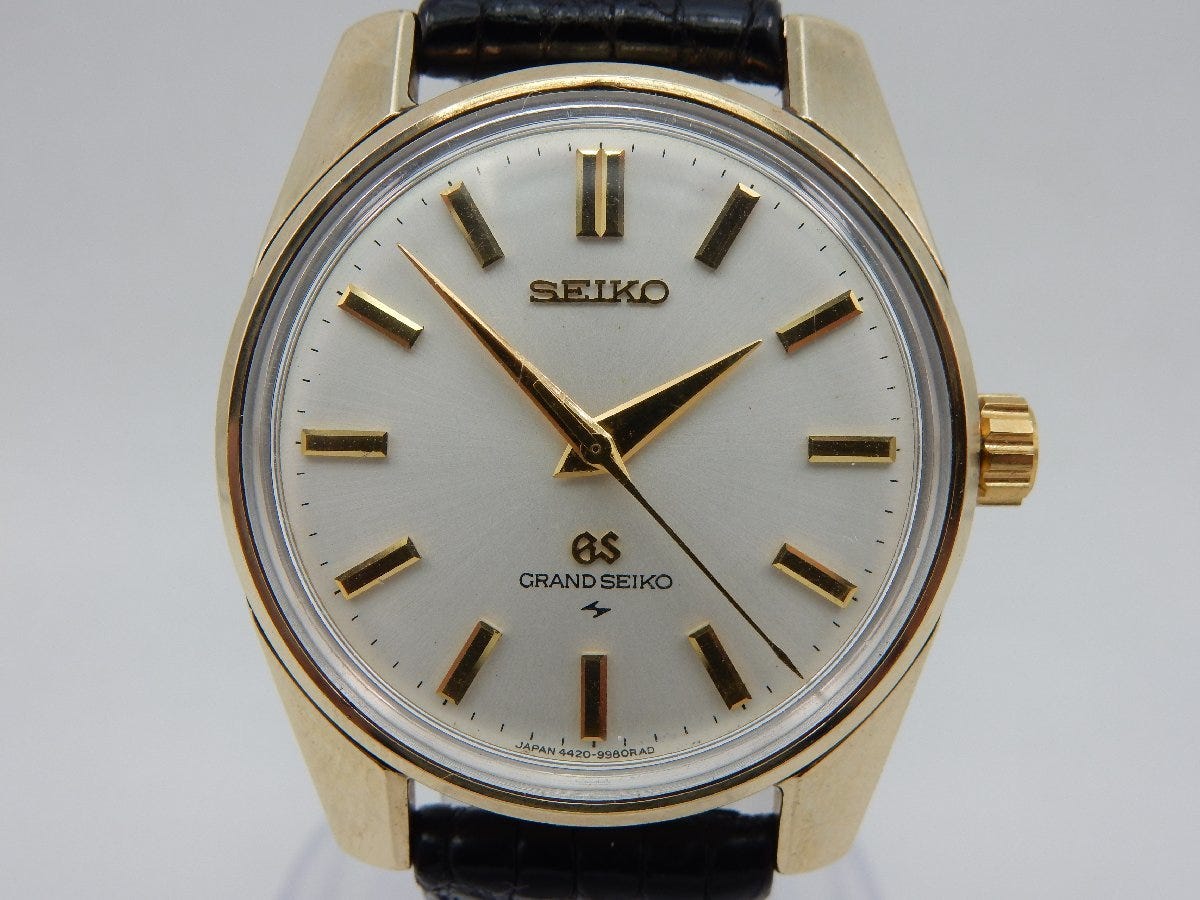








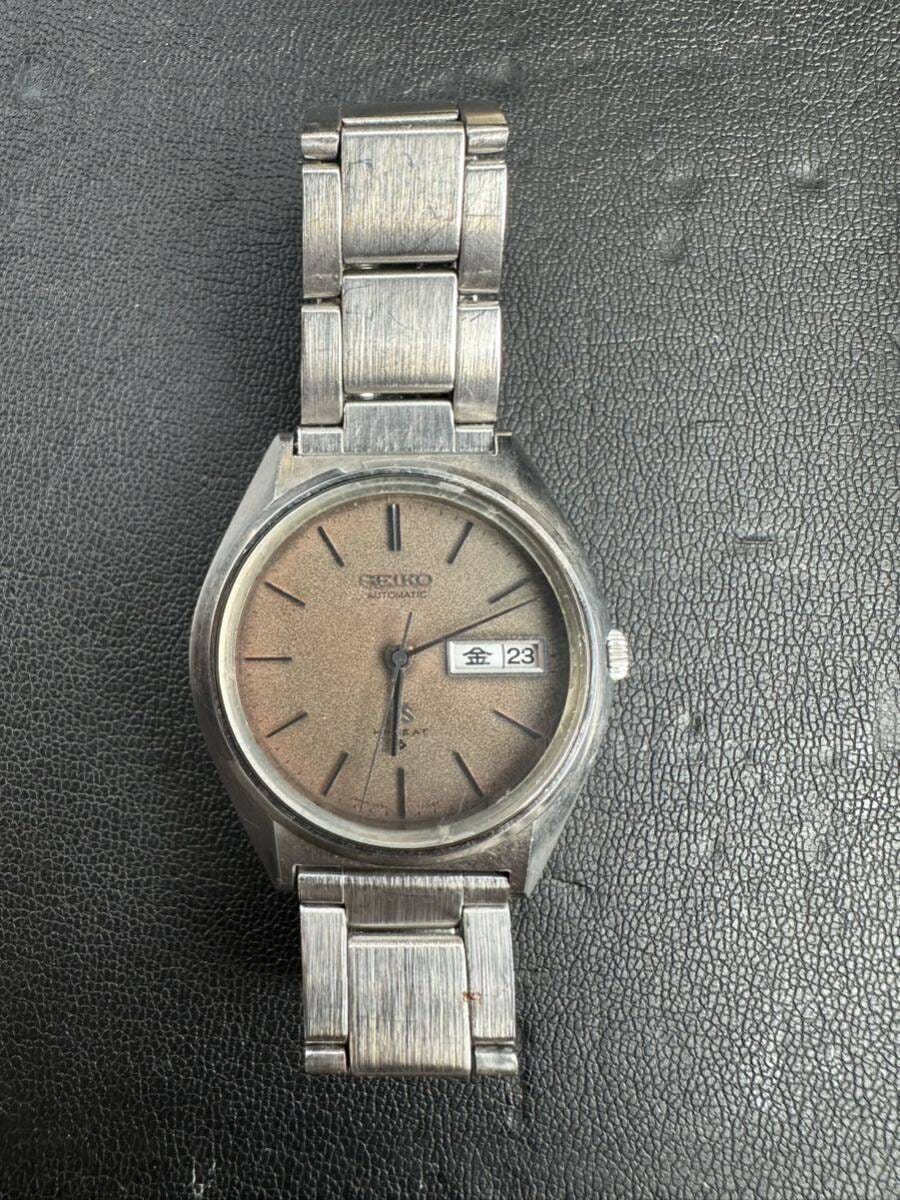

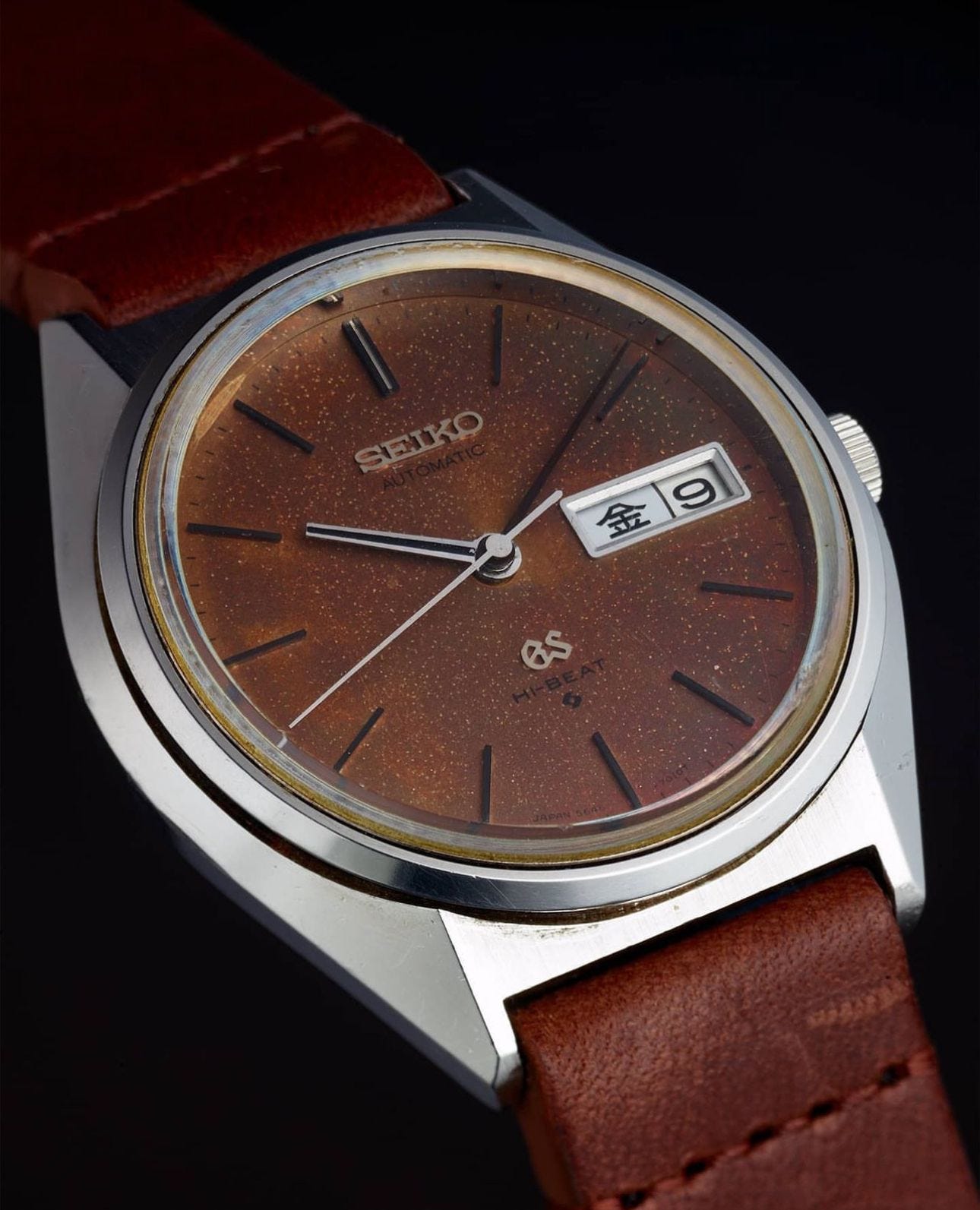



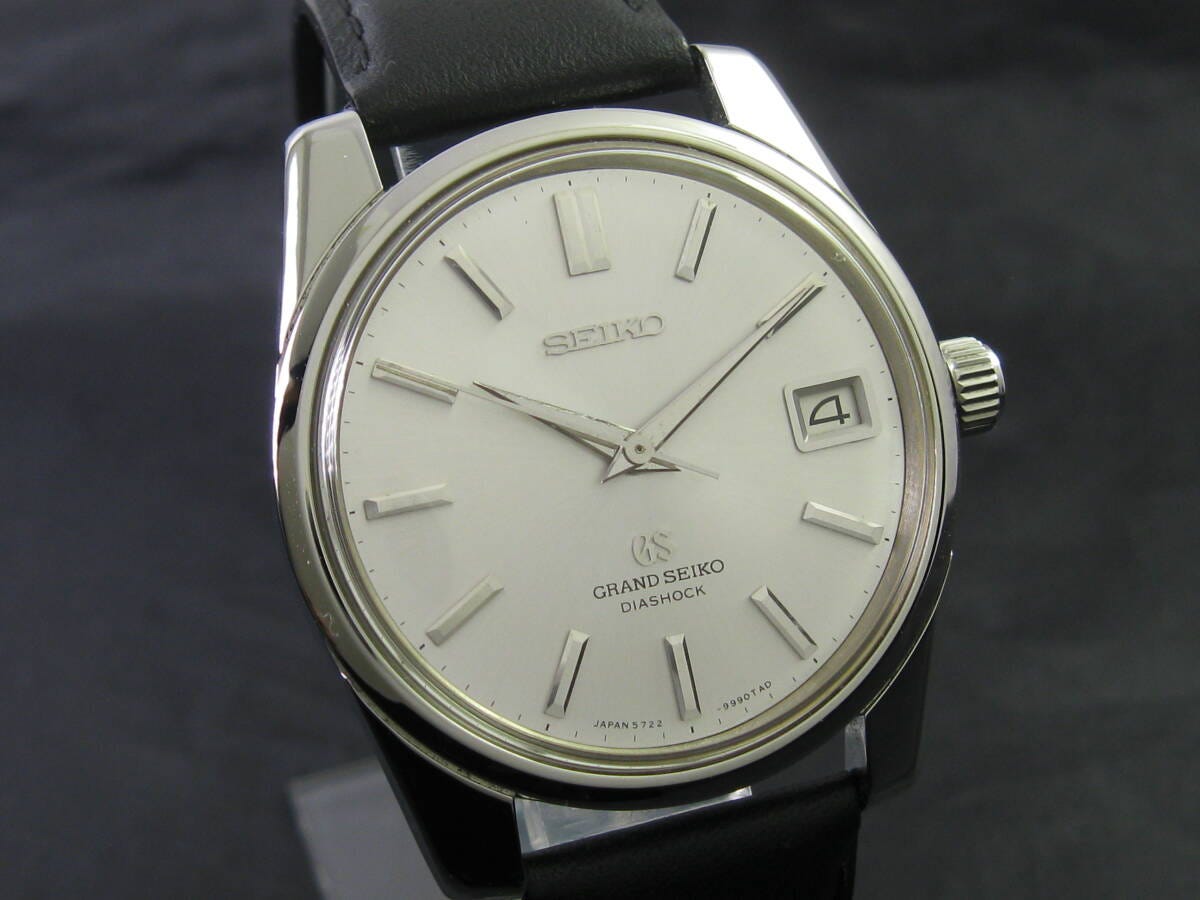

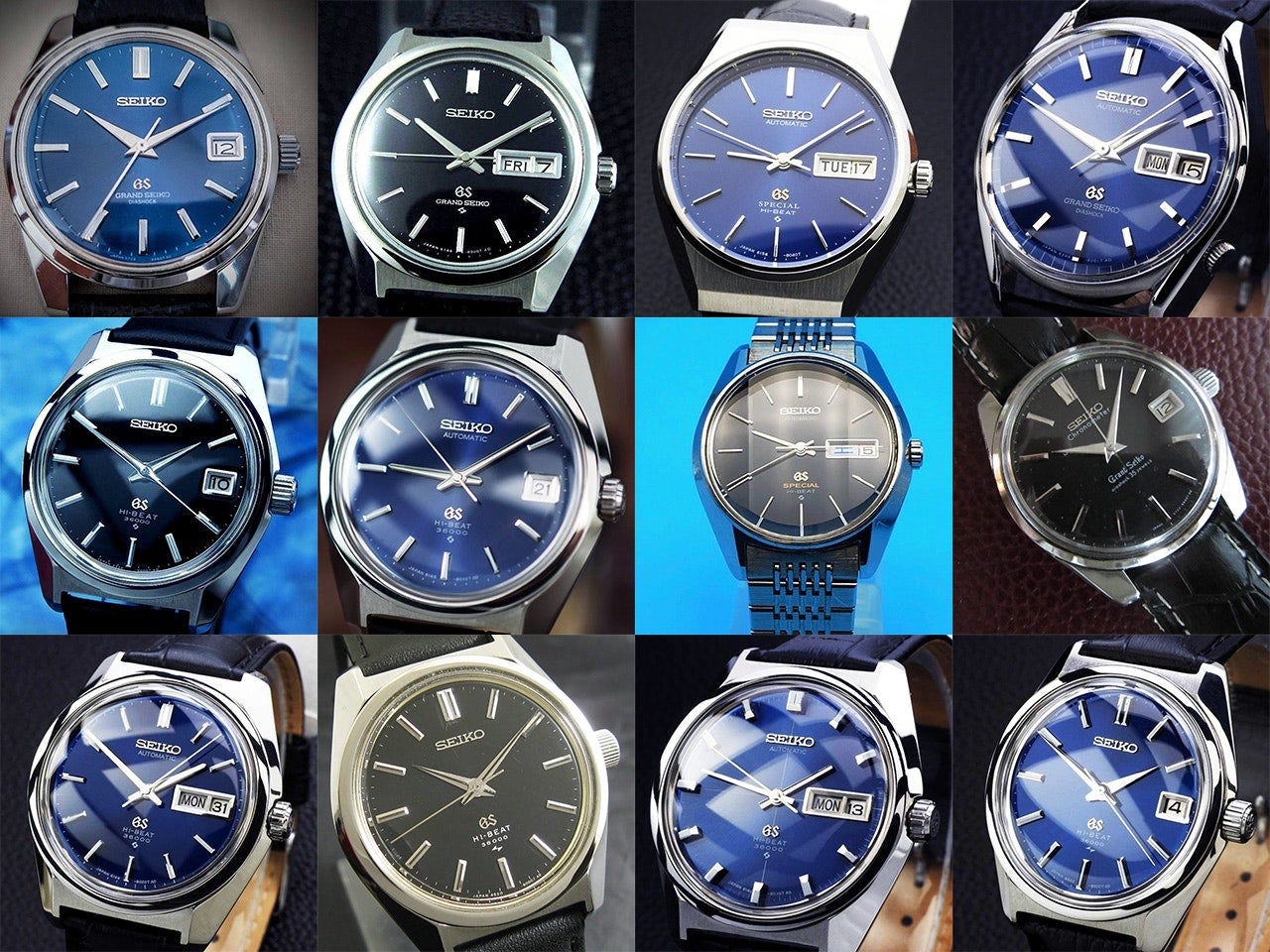
Bingo! Pantone codes display for the 56
Had no idea that the cap gold 44 used the arrow second hand off the KS44 Chronometer. One of my favourite ever Seiko details.